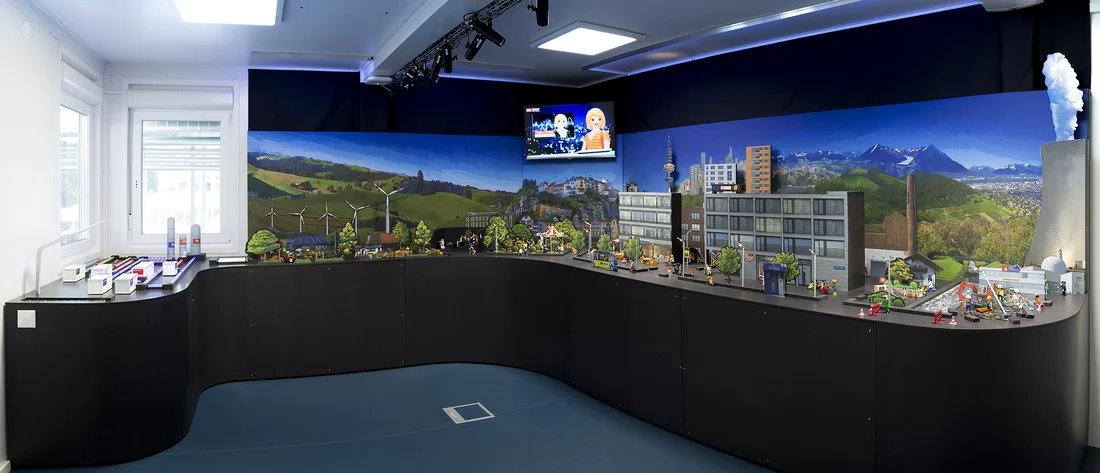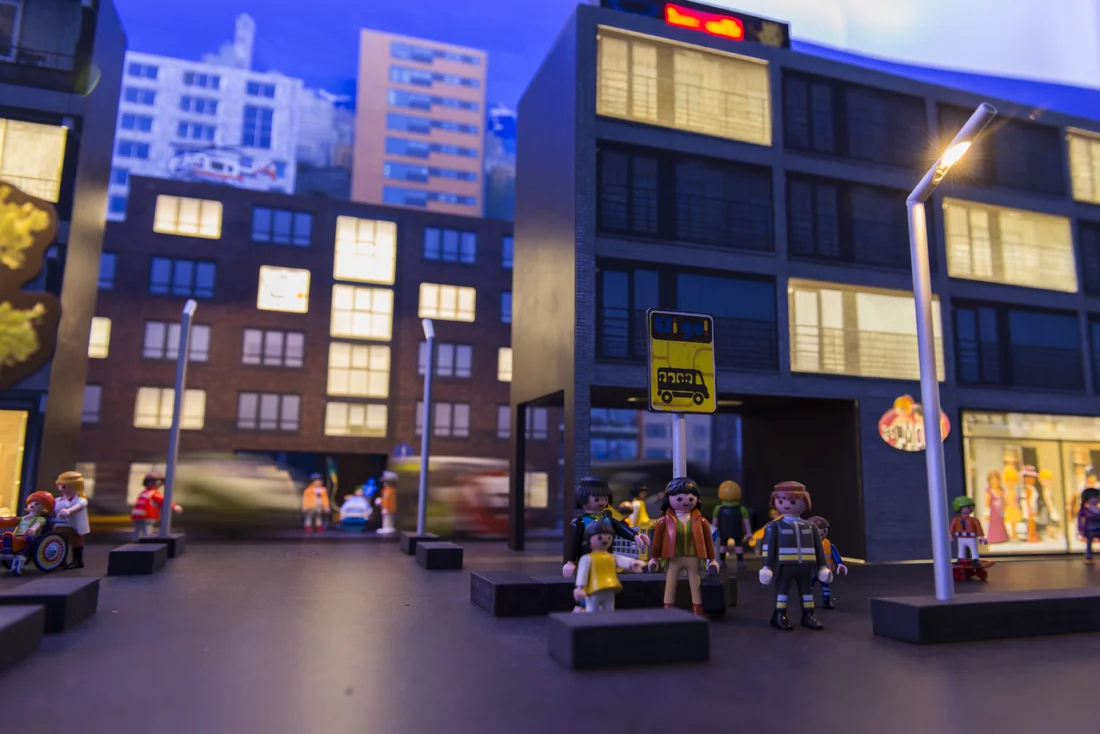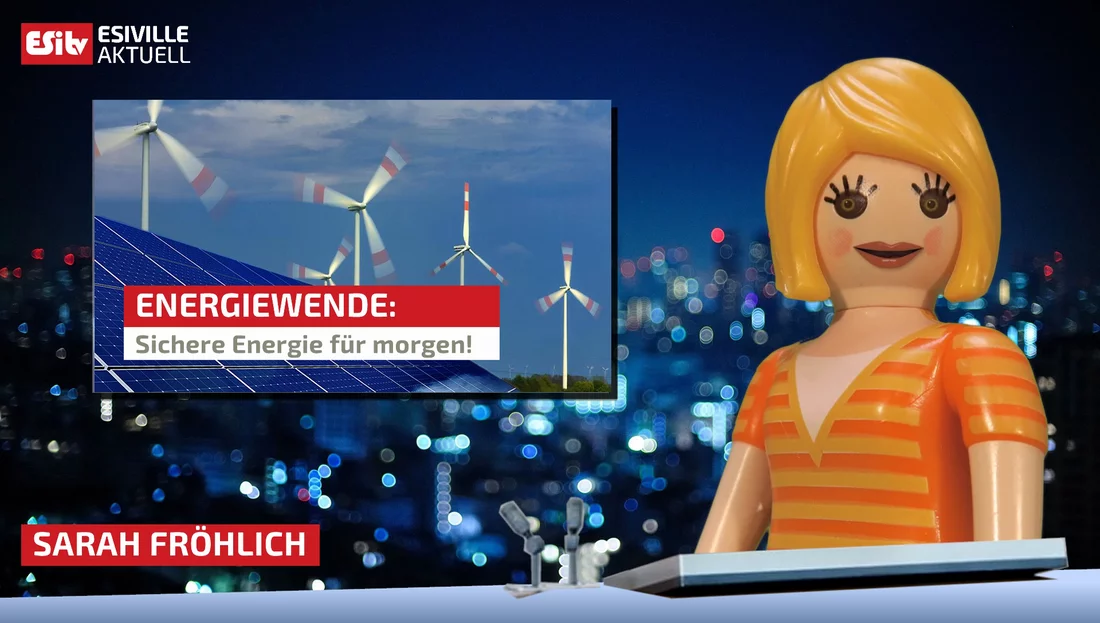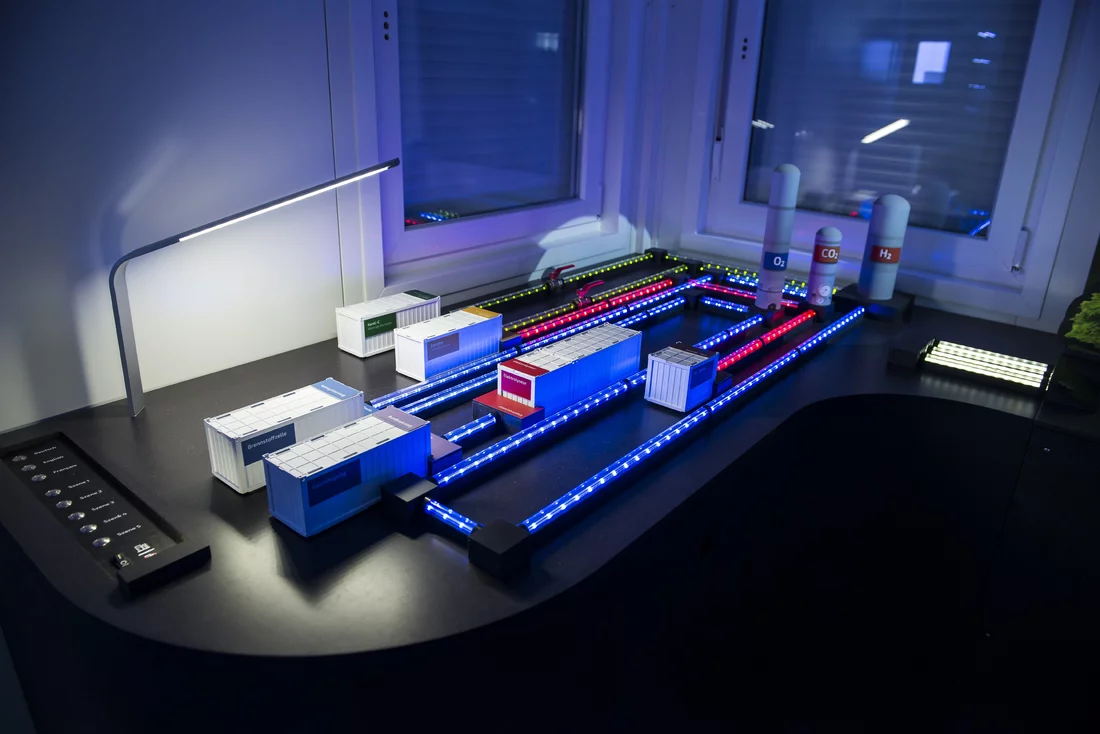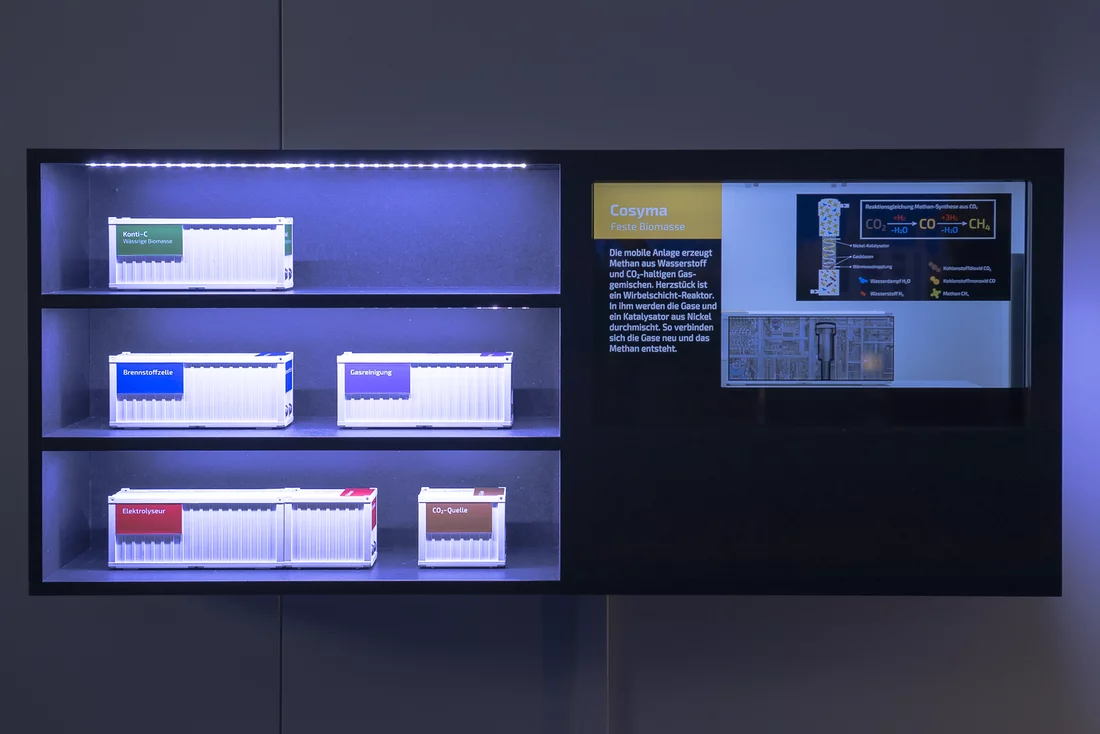With the increasing expansion of photovoltaic and wind plants, integrating the thereby irregularly generated power into the existing energy system is becoming a challenge. Now a new visitor’s station at the Paul Scherrer Institute PSI offers a playful approach to making this complex subject matter easy to understand. It tells the story of a Swiss town that makes the change from a conventional energy supply to one with new renewable energy sources.
The Swiss government’s Energy Strategy 2050 envisions an expansion of new sources of renewable energy from the sun, the wind, and biomass. But solar and wind power plants in particular still present major challenges. They produce electricity according the weather conditions, and if they produce too much, this precious power goes to waste, because the grid is unable to absorb it.
One promising solution for this problem is to convert the surplus electricity into energy-rich gases such as hydrogen or methane. These can be readily stored and either used on demand or converted back into electrical power. This technology, referred to as power-to-gas, is at the heart of the Energy System Integration (ESI) Platform, which was put into operation at the end of 2016. The ESI Platform is set up with a modular design as a container village. Here partners from research and industry are investigating the technical feasibility of different variants of power-to-gas technology on a pilot scale.
The new ESI visitor’s station
A new visitor’s station has been set up to make the ESI Platform and its potential contribution to the future energy supply understandable for a wide audience. The goal is to communicate the complex interdependencies between the political program (Energy Strategy 2050), the challenges (integrating irregularly generated power while keeping the network in balance), and the solutions (power-to-gas) in an entertaining and playful way.
Welcome to Esiville
Central to the ESI visitor’s station is a diorama with the interactive model town Esiville. Populated by Playmobil toy figures, it tells the story of a Swiss town that makes the transition from a conventional energy supply to one with new renewable energy sources. The change is triggered by a devastating storm. But it quickly becomes clear: The development of new renewable energy sources alone is not sufficient for a secure energy supply. Ways must be found to store the irregularly generated power from the solar and wind plants in the long term.
Interactive learning
Just how to solve the problem is something the visitors can find out for themselves with the help of a model construction site. They build an ESI Platform in miniature form and see how the different variants of power-to-gas technology can contribute to a successful energy transition. In this, the model construction site is coupled back to the diorama, giving the visitors direct feedback on the progress of the construction work. Only when the various technologies have been implemented can life in the town go on again as usual. Exactly which technology is inside which container is revealed by an “X-ray station“: With that, the visitors can penetrate the interior of the model containers and get acquainted with the essential aspects of the technologies that are being studied on the ESI Platform.
Guided tours
The new ESI visitor’s station can be explored as part of a guided tour of the PSI. An expert leads visitors through the complex subject matter. This offer is free of charge, though it is necessary to register in advance and make an appointment. Further information can be found on the website of the visitor’s center “psi forum”.
Text: Paul Scherrer Institute/Martina Gröschl
About PSI
The Paul Scherrer Institute PSI develops, builds and operates large, complex research facilities and makes them available to the national and international research community. The institute's own key research priorities are in the fields of matter and materials, energy and environment and human health. PSI is committed to the training of future generations. Therefore about one quarter of our staff are post-docs, post-graduates or apprentices. Altogether PSI employs 2000 people, thus being the largest research institute in Switzerland. The annual budget amounts to approximately CHF 370 million. PSI is part of the ETH Domain, with the other members being the two Swiss Federal Institutes of Technology, ETH Zurich and EPFL Lausanne, as well as Eawag (Swiss Federal Institute of Aquatic Science and Technology), Empa (Swiss Federal Laboratories for Materials Science and Technology) and WSL (Swiss Federal Institute for Forest, Snow and Landscape Research).
(Last updated in May 2016)
Additional information
Overview: ESI Platform – new pathways to the energy system of the futurePartners of the ESI Platform
Contact
Martina Gröschl, Communications DepartmentPaul Scherrer Institute, 5232 Villigen PSI, Switzerland
Telephone: +41 56 310 52 13, e-mail: martina.groeschl@psi.ch

